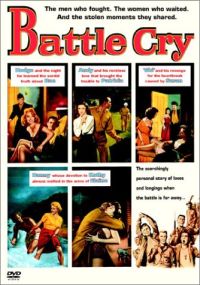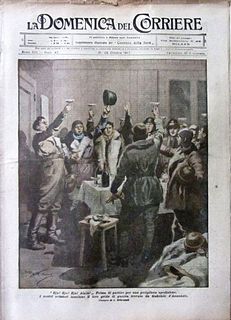This page is based on this
Wikipedia article Text is available under the
CC BY-SA 4.0 license; additional terms may apply.
Images, videos and audio are available under their respective licenses.
A video jockey is an announcer who introduces music videos and live performances on commercial music television stations such as VH1, MTV, Channel V and Much Music.
Dolphin is an aquatic mammal.
In Greek mythology, Pegasus was a winged horse sired by Poseidon.
A battle cry is a yell or chant taken up in battle, usually by members of the same combatant group.
Battle cries are not necessarily articulate, although they often aim to invoke patriotic or religious sentiment. Their purpose is a combination of arousing aggression and esprit de corps on one's own side and causing intimidation on the hostile side. Battle cries are a universal form of display behaviour aiming at competitive advantage, ideally by overstating one's own aggressive potential to a point where the enemy prefers to avoid confrontation altogether and opts to flee. In order to overstate one's potential for aggression, battle cries need to be as loud as possible, and have historically often been amplified by acoustic devices such as horns, drums, conches, carnyxes, bagpipes, bugles, etc..

The "Battle Cry of Freedom", also known as "Rally 'Round the Flag", is a song written in 1862 by American composer George Frederick Root (1820–1895) during the American Civil War. A patriotic song advocating the causes of Unionism and abolitionism, it became so popular that composer H. L. Schreiner and lyricist W. H. Barnes adapted it for the Confederacy.

"The Bonnie Blue Flag", also known as "We Are a Band of Brothers", is an 1861 marching song associated with the Confederate States of America. The words were written by the entertainer Harry McCarthy, with the melody taken from the song "The Irish Jaunting Car". The song's title refers to the unofficial first flag of the Confederacy, the Bonnie Blue Flag. The left flag on the sheet-music to the reader's right is the Bonnie Blue Flag.

Battle Cry is a 1955 Warner Color film, starring Van Heflin, Aldo Ray, James Whitmore, Tab Hunter, Anne Francis, Dorothy Malone, Raymond Massey, and Mona Freeman in CinemaScope. The movie is based on the novel by former Marine Leon Uris, who also wrote the screenplay, and was produced and directed by Raoul Walsh. The film was shot at Camp Pendleton, California and featured a large amount of cooperation from the United States Marine Corps.
Space is the boundless three-dimensional extent in which objects and events have relative position and direction.
Oorah is a battle cry common in the United States Marine Corps since the mid-20th century. It is comparable to Hooah in the United States Army and the United States Air Force, and Hooyah in the United States Navy and the United States Coast Guard.
Hooah is a battle cry used by soldiers in the U.S. Army and airmen in the U.S. Air Force. Originally spelled "Hough", the battle cry was first used by members of the 2nd Cavalry Regiment during the Second Seminole War in 1841, after Seminole chief Coacoochee toasted officers of the regiment with a loud "Hough!", apparently a corruption of "How d'ye do!" Since WWII, the word has been widely used throughout the US Army and gained a more general meaning of "anything and everything except 'no'". It is comparable to Oorah in the United States Marine Corps, and Hooyah in the United States Navy and the United States Coast Guard.
Spook is a synonym for ghost or apparition, derived from the Dutch word spook.

Alala, was the personification of the war cry in Greek mythology. Her name derives from the onomatopoeic Greek word ἀλαλή (alalḗ), hence the verb ἀλαλάζω (alalázō), "to raise the war-cry". Greek soldiers attacked the enemy with this cry in order to cause panic in their lines. Hesiod asserted that Athenians adopted it to emulate the cry of the owl, the bird of their patron goddess Athena.
Hip hip hooray is a cheer called out to express congratulation toward someone or something, in the English speaking world and elsewhere.

Marines, Let's Go is a 1961 CinemaScope colour Korean War film about three Marine buddies on shore leave in Japan and at war in Korea. It was produced and directed by Raoul Walsh, who also wrote the story. Walsh had previously had successes with films about the U.S. Marine Corps in World War I, the 1920s, and World War II. This was the next-to-last film of Walsh's long directing career.
The 23rd Guldbagge Awards ceremony, presented by the Swedish Film Institute, honored the best Swedish films of 1987, and took place on 1 February 1988. Pelle the Conqueror directed by Bille August was presented with the award for Best Film.
Lene Brøndum is a Danish actress. At the 23rd Guldbagge Awards she won the award for Best Actress for her role in Hip Hip Hurrah! She has appeared in more than 35 films and television shows since 1976.
The Station may refer to:





